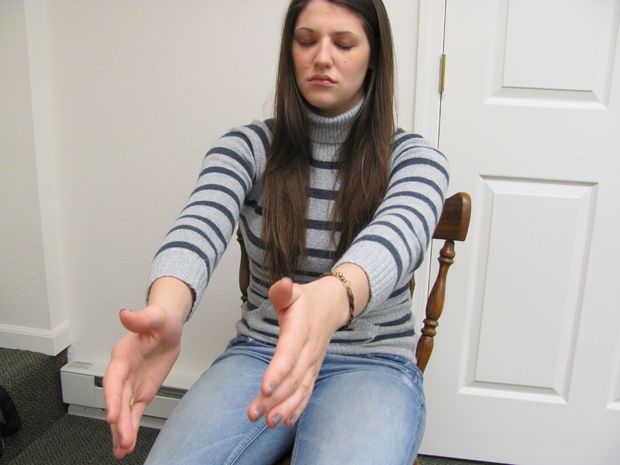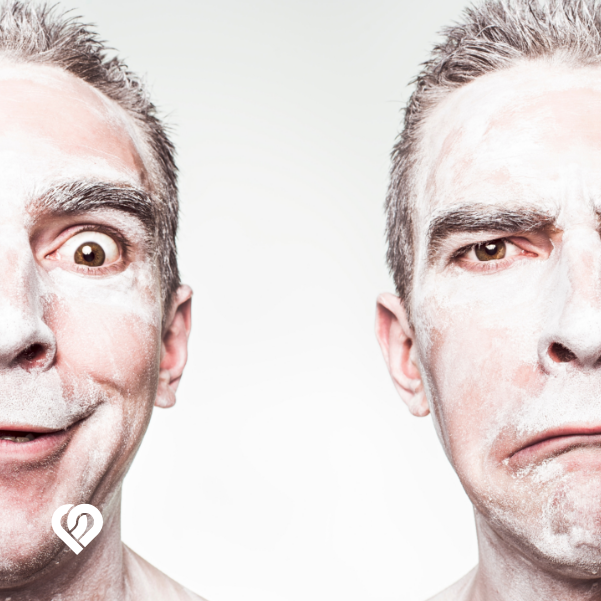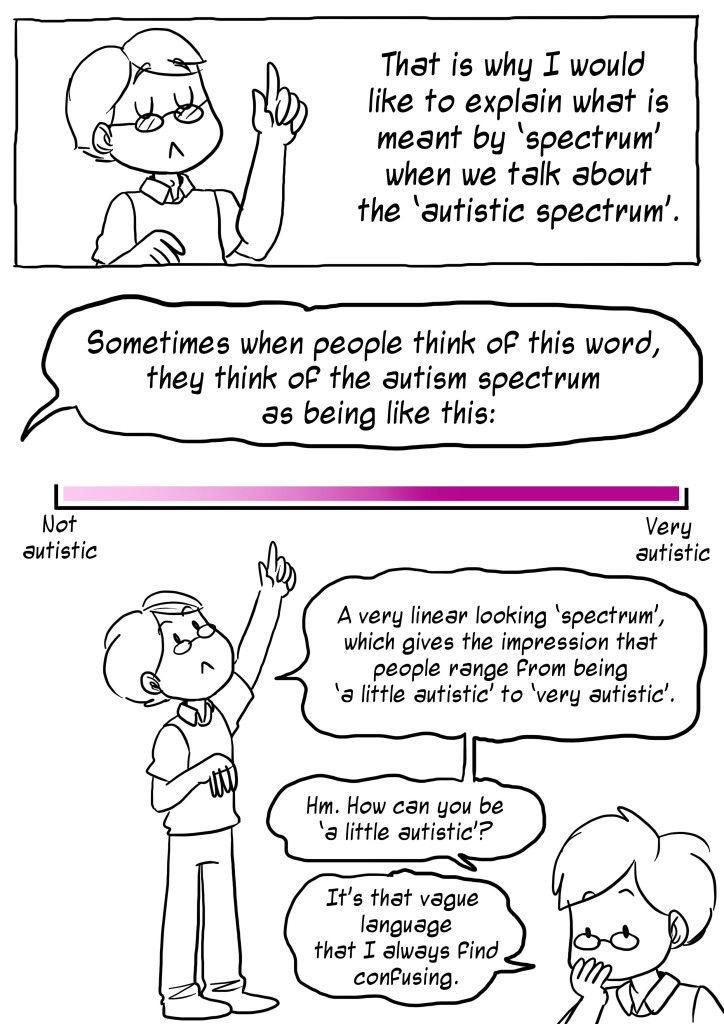How to become hypnotized easier
How to Help Yourself Through Hypnosis
Experts estimate that between 15-30 percent of the population is highly hypnotizable. A Stanford study showed that about 25 percent of the population is very difficult, if not impossible, to hypnotize. The rest of us probably fall somewhere in between.
Aleshyn_Andrei/Shutterstock
In the Stanford study, it was proven that predicting “hypnotizability” is less about personality and more about cognitive style. Most hypnotists agree that people with a good imagination, who are highly susceptible, and who possess the ability to “picture” things clearly, are more easily hypnotized than those who are analytical by nature and try to figure out the hypnotist’s machinations.
Hypnosis is used for everything from curing allergies to promoting weight loss. And for many behavioral changes, such as quitting smoking, losing weight, minimizing anxiety and overcoming certain fears, self-hypnosis can be a useful tool.
While you may not be someone who can be easily hypnotized by a hypnotherapist, let’s look at the self-hypnosis steps you can use to help move you toward the behavioral changes you desire:
- You don’t have to be able to meditate and clear your mind, but sitting quietly and repeating phrases is important.
Your subconscious mind already has a number of “tapes” it plays—“I’ll never lose the baby weight,” “I’m just not good at public speaking,” “I’ll never find another person to love me,” etc. Self-hypnosis works to replace these negative statements with more positive ones. You will have to find the time and the space to sit quietly for a few minutes each day. Five minutes, five times a day is best.
- Identify a spot in your home or office that is a restful place for you. Some people actually use their cars. You want to have a regular spot that your mind begins to associate with the self-hypnotic state. The more you practice in one spot, the easier it will be to reach a deeper state in which your mind is open to more positive suggestions. If you are able to do so, create the space as something appealing and enjoyable to you. Have a favorite chair or some calming reminders waiting for you there.
- Be sure you have 5-to-10 minutes of uninterrupted time. Take the phone off the ringer and silence your cell phone—in fact, leave it in another room altogether.
 Let your roommates or family know you need a few minutes of personal space. And don’t do it a time immediately before you have to rush off somewhere. Do it at a time that is somewhat relaxed for you.
Let your roommates or family know you need a few minutes of personal space. And don’t do it a time immediately before you have to rush off somewhere. Do it at a time that is somewhat relaxed for you. - Be ready with your objectives. Write out some positive statements in advance: “I am making good eating choices every day. I choose the foods that are good and healthy for my body.” Be sure you stay in the present tense (something you are doing now, not that you are going to do), and that you stay positive but not overly “rah-rah.” If your mind doesn’t believe whatever you are saying, it can reject it. In other words, say things like, “I know the right foods and I make good choices,” instead of, “I am looking more like a runway model every day.”
- Remember that to be successful, you don’t have to create pictures in your mind. Some people see things very clearly; others are more kinesthetic or auditory. As long as you can “sense” what you want and somehow create a reaction or an image of it in your mind, you can self-hypnotize.
 Before you start, write down a few things about the desired goal—quantitative and qualitative. Get clear on what your success will look like. This is where you can be more future-looking. For example: “My goals: to reach a goal weight of 150 pounds by eating mostly fresh foods and vegetables, chicken and fish for two of my three meals a day.” Be as specific as possible about what you want to accomplish and how you will get there. Focus on measurable activities as much as you can. You can also add some qualitative aspects: “… and I feel more and more healthy and active every single day as a result!”
Before you start, write down a few things about the desired goal—quantitative and qualitative. Get clear on what your success will look like. This is where you can be more future-looking. For example: “My goals: to reach a goal weight of 150 pounds by eating mostly fresh foods and vegetables, chicken and fish for two of my three meals a day.” Be as specific as possible about what you want to accomplish and how you will get there. Focus on measurable activities as much as you can. You can also add some qualitative aspects: “… and I feel more and more healthy and active every single day as a result!” - Remember that it takes repetition. You have accumulated bad habits by practicing them; you didn’t come out of the womb reaching for a bag of potato chips. Bad habits are learned behaviors, and so are good ones. Any new behavior takes about 21 days to become a habit. Commit to yourself that you will practice this process for 21 days, straight. If you get off track, start tracking again so that you achieve three weeks of consecutive practice.

For some people, seeing a professional is the best option, but if you aren’t able to do so because of time, money, or access concerns, begin to practice these techniques on your own and see what positive changes you can incorporate into your life.
Help! I Can't Be Hypnotized
Hypnotherapy induces a natural and relaxing trance state
- "I don't think I can be hypnotized! I get distracted!"
- "I'm sure I can't be hypnotized - I'm too strong-willed!"
- "I can't be hypnotized; I'm terrified of handing over control to someone else!"
We 'in the trade' hear this all the time. Over the years, I've heard variations on the above over and over. It all comes back to one thing: a misunderstanding as to what hypnosis is and isn't.
First off, everybody can be hypnotized. Yes, even you!
Once you understand that everyone can be hypnotized, you can stop wondering about whether you can be hypnotized and focus on how you can be.
Even worrying about whether you can be hypnotized is a type of hypnosis
That's right. During therapeutic hypnosis, your attention can drift inwards as you focus on the contents of your own thoughts and imaginings. Worrying is so hypnotic that we can be very inwardly absorbed for a few seconds and not hear someone calling our name. So, reflecting inwardly 'can I be hypnotized?' is a light hypnotic experience in itself!
And if you couldn't be hypnotized...well, that wouldn't be natural.
Hypnosis is natural and happens anyway
Hypnosis happens in many kinds of ways, at different times of the day and night (1). It happens when we go into shock, when we're surprised, fascinated, and dreaming at night.
So if you have ever had a night-time dream (and believe me, you have, even if you've never remembered one), ever learnt anything, ever had your mind wander and forgot to pay attention to someone talking, or ever worried about something, or got deeply absorbed in a task, you have been hypnotized.
And you'll notice that all of these everyday examples are 'self-hypnosis', that is, these experiences all happen within you without any input from another person.
Emotional problems, from addiction and depression to phobias and fears, all focus the attention narrowly and 'program' us with certain feelings that become automatic and eventually work, in effect, just like post-hypnotic suggestions. The beer acts like a post-hypnotic prompt for the smoker to light up.
The phobic hears just the word 'spider' and post-hypnotically feels scared. So even problem states have a hypnotic element to them, and we use controlled therapeutic hypnosis to overcome the negative effects of such 'life hypnosis'.
What people often really mean when they worry over whether they can be hypnotized is: "Can I be hypnotized in a formal hypnotic situation such as by a hypnotherapist?"
The need for flexibility
As I've said, we can all be hypnotized by situations. The situation of sleep sends you into a hypnotic dream; the situation of shock or surprise (3) puts you into a radically altered state of consciousness - a more open and easily conditioned one. But to try to go into hypnosis, to voluntarily change your state of mind (or let someone help you do this) - that is what some people feel they might not be able to do.
But to try to go into hypnosis, to voluntarily change your state of mind (or let someone help you do this) - that is what some people feel they might not be able to do.
If a hypnotherapist is too inflexible, perhaps because they read to their clients from a script or just have one or two techniques they try to apply to everyone, then it might seem as if hypnosis doesn't work for you when it's really their lack of flexibility.
We train our therapists to tailor their hypnotic inductions to the unique needs and personality of the person being hypnotized. The downloads on this site also reflect this flexible approach and we urge therapists who buy our scripts to use them for inspiration and ideas, and not read them to their clients.
So if you feel as if you can't go into hypnosis, what you really mean is that you haven't yet entered trance in a formal hypnotic situation in which someone is actually attempting to hypnotize you. But there's something else here.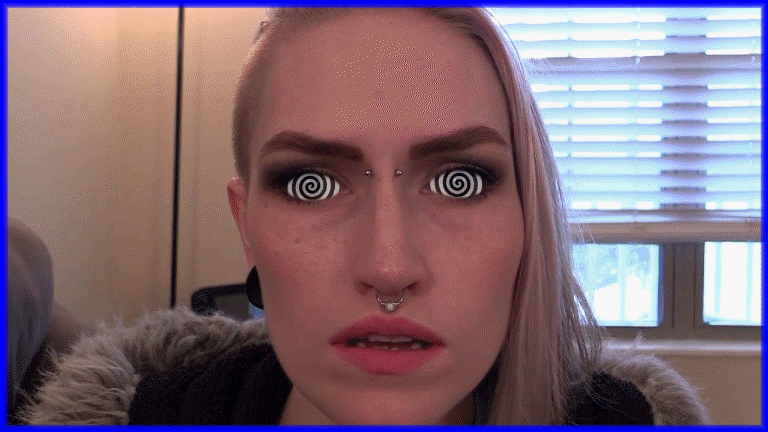
Am I really hypnotized?
People assume that if they stop hearing the hypnotherapist, they must have fallen asleep; but if they hear them all the time, they weren't really hypnotized. Sure, some people fall asleep, but if the person comes back at the end of the session to suggestions to open their eyes, then they certainly were not in a deep sleep and were probably just in a deep state of hypnosis.
Those who can still hear the hypnotherapist (yes, you can still hear when you enter hypnosis) might think they haven't been hypnotized, assuming that the conscious mind has to go away completely for hypnosis to happen.
The fact is that there are degrees or 'levels' of hypnosis and you can get great benefit being in a light level of trance. Sometimes you will go deeply, sometimes you experience lighter levels - and that's fine.
Do I have to be awake during hypnosis?
Sometimes conscious processing stops altogether during hypnosis (see my "I think I was asleep" example above), but more often than not a person will experience a 'parallel awareness'.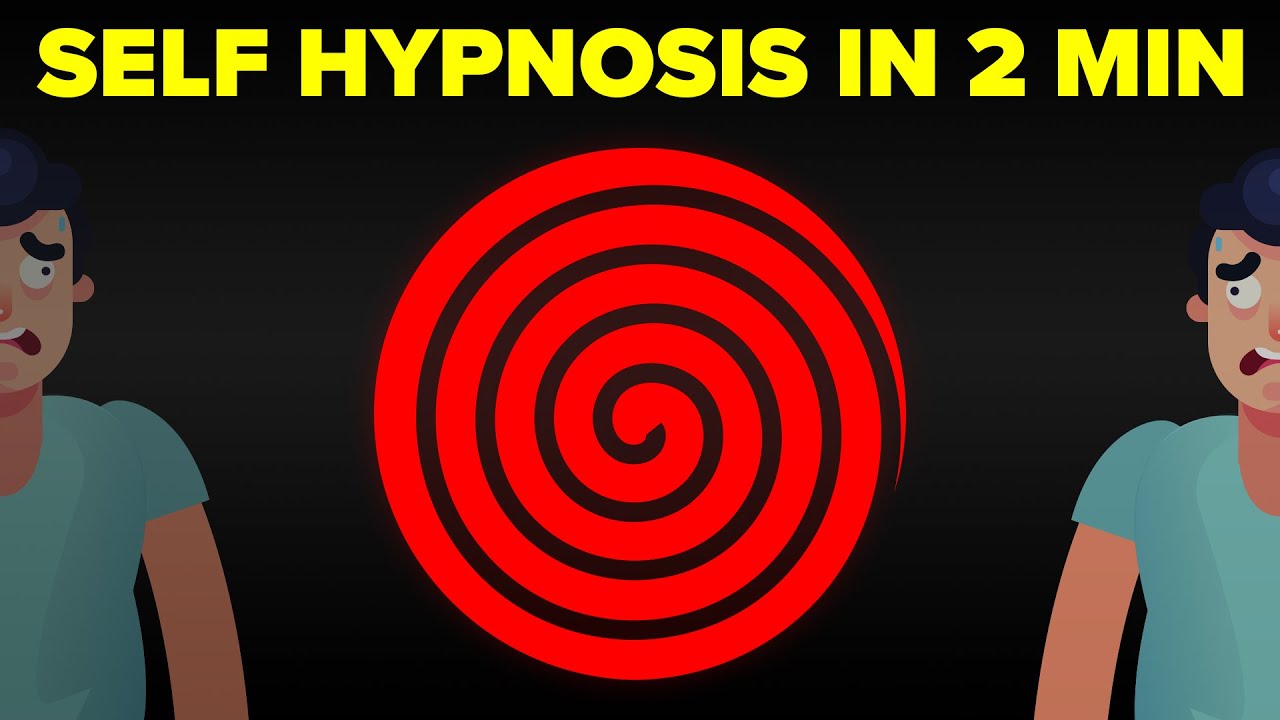
This means that the conscious part of them can still think, analyze, and so on, even as their unconscious mind responds to suggestions. Someone might not believe they are in hypnosis, but suddenly be surprised to find that they have lost the pain they were feeling in their arm as the hypnotist suggests they feel more comfortable.
Someone may believe themselves unhypnotized, but find after a session that they no longer wish to smoke or suddenly feel a lot more relaxed in a previously troubling situation. So, being hypnotized may feel different, like 'entering a new world', or it may feel quite normal because, well...it is.
More or less hypnotic
Some people are naturally more hypnotically talented than others and can go into hypnosis at the drop of a hat or the command of a stage hypnotist. Other people need to practice going into trance in a formal hypnotic situation.
People who develop phobias, have persistent post traumatic stress disorder, or easily get angry or depressed tend to be good hypnotic subjects. It's just that they need to use hypnosis to enable them to learn healthier ways of being.
It's just that they need to use hypnosis to enable them to learn healthier ways of being.
Creative people tend to make great hypnotic subjects, as they can already focus their minds and make connections. Those who can concentrate or who are high performers tend to also enter hypnosis easily as they are naturally able to focus and block out distractions. In this way, having strong willpower helps you become hypnotized; so ideas of "I'm too strong-willed to be hypnotized" don't really mean anything.
Becoming easily distracted may seem to block hypnotic experience. But a gifted hypnotist will have the flexibility to even use distractions to help someone go into hypnosis. This is known as 'The Utilization Principle', which means the flexible therapist should use whatever the client or hypnotic subject brings to the situation, even a 'scattered mind', in order to help them.
When you enter hypnosis, you still have free will and options of response. A suggestion is just that, not an order. We use hypnosis to help people gain more control over behaviours that had been controlling them, such as smoking, fears, phobias, depression, anxiety or insomnia.
A suggestion is just that, not an order. We use hypnosis to help people gain more control over behaviours that had been controlling them, such as smoking, fears, phobias, depression, anxiety or insomnia.
Hypnosis is a tool, the medium through which the mind and body learn. Some levels of hypnosis are so light they seem little different from everyday awareness and some are so deep you feel you've entered another realm or 'went somewhere completely different for a while.' But hypnosis is natural to all and everyone; the right approach will enable anyone to go into hypnosis and that includes you!
For more help with going into hypnosis, try my Be A Better Hypnotic Subject download.
To learn more about hypnosis, see our free online self hypnosis course.
How to hypnotize yourself and other secrets of our consciousness | Healthy life | Health
Together or apart?
Varvara, St. Petersburg: – Which hypnosis is better - group or individual?
Igor Salintsev : – Group hypnotherapy session, which can involve up to 50 people, is suitable for working with people suffering from the same pathology - alcohol or drug addiction, stuttering, enuresis, etc. At the same time, in a collective In a session, the effect of exposure increases: hypnotic induction is transmitted from person to person (from more hypnotic people to less), and the suggestion of the attitudes necessary for recovery in this case penetrates deeper into the subconscious.
At the same time, in a collective In a session, the effect of exposure increases: hypnotic induction is transmitted from person to person (from more hypnotic people to less), and the suggestion of the attitudes necessary for recovery in this case penetrates deeper into the subconscious.
An individual session of hypnotherapy is more targeted and focused directly on the person and his problem. At the same time, the hypnologist uses exactly those suggestions that are based on the basic concepts for the patient, based on the typology of his nervous system. So, for visuals, visual images are more understandable, audials are aimed at auditory information, and kinesthetics learn the world through touch, smell and taste sensations.
By the way, certain diseases can be diagnosed by the nature of the suggested images. For example, patients with depression in a state of hypnotic somnambulism see the “picture” in black and white, and when the depression goes away, the suggested images suddenly begin to play with bright colors.
Recall everything
Elena, Moscow: – It is said that under hypnosis a person can even remember what happened to him in early childhood. What is it and what is it for?
J.S.: – It is no secret that any event that has taken place in our life, starting from our birth, remains in memory, but goes deep into the subconscious. In this "pantry" there is not only positive, but also negative. And this is the protective properties of our memory - to erase what can cause us mental pain.
But sometimes these far-hidden experiences can surface in the form of phobias (fears), psychosomatic disorders (gastritis, bronchial asthma, etc.). Hypnosis, on the other hand, helps to reproduce, release from the subconscious the once experienced negative moments and change their significance with a special suggestion.
On the edge
Vladislav, Voronezh: – If hypnosis is used as a treatment, does it mean that it can have side effects and complications?
J. S.: – The most common is the loss of rapport (communication between the hypnotist and the hypnotized), when a person goes from a hypnotic state into sleep, that is, he practically falls asleep. Sometimes this can be accompanied by a sharp drop in blood pressure, up to fainting. It also happens that in a hypnotic trance a person has erotic reactions, and even serious psychotic outbursts. This is why it is very important in hypnotherapy to know the personality of the person you are treating. Before each session, I carefully study the patient's medical history, features of his personality. Otherwise, hypnosis can be harmful and dangerous.
S.: – The most common is the loss of rapport (communication between the hypnotist and the hypnotized), when a person goes from a hypnotic state into sleep, that is, he practically falls asleep. Sometimes this can be accompanied by a sharp drop in blood pressure, up to fainting. It also happens that in a hypnotic trance a person has erotic reactions, and even serious psychotic outbursts. This is why it is very important in hypnotherapy to know the personality of the person you are treating. Before each session, I carefully study the patient's medical history, features of his personality. Otherwise, hypnosis can be harmful and dangerous.
Obvious-incredible
Oleg, Moscow: – Are there mysterious, inexplicable things in hypnosis?
J. S.: – One of such phenomena is the suggestion to the hypnotized person of progress or regression of age, time dates in which he did not live and could never live: in 1905 or in 1812. The most amazing thing is that people at the same time begin to speak in such phraseological turns that were used at that time, and accurately describe the historical events taking place then.
The most amazing thing is that people at the same time begin to speak in such phraseological turns that were used at that time, and accurately describe the historical events taking place then.
But perhaps even more interesting and mysterious is when I "send" my patients into the future. After checking the “visions” of one of my patients a year later, I was stunned: they exactly came true. How to explain this phenomenon, I do not know. This is yet to be explored and studied.
Himself a hypnotist
Mikhail, Tver: – Tell me, can a person hypnotize himself?
I.S.: – May. For example, hatha yogis do self-hypnosis. Once I was also fond of this and plunged into a hypnotic trance. The sensations that arose at the same time surprised me and ... frightened me. Having felt on myself how powerful this effect is, I stopped practicing such experiments with myself.
However, the state of hypnosis sometimes occurs spontaneously, as a reaction to a psychotrauma - a fire, a catastrophe, the death of a loved one. This state is a defensive reaction to shock. There is also such a phenomenon as amputation hypnosis that occurs after a physical injury. Thanks to him, a person does not feel pain for some time. This is due to the release of dynorphin into the blood - a hormone-like substance that is produced in our body and which is 200 times stronger than morphine.
This state is a defensive reaction to shock. There is also such a phenomenon as amputation hypnosis that occurs after a physical injury. Thanks to him, a person does not feel pain for some time. This is due to the release of dynorphin into the blood - a hormone-like substance that is produced in our body and which is 200 times stronger than morphine.
The best option
Igor, Saratov: – Tell me, how long does a hypnosis session last and how many sessions do you need to go through to make sense of them?
J.S.: - It all depends on what disease the hypnotherapist is dealing with and what stage it is at. On average, a hypnotherapy session lasts 20-30 minutes. But it can also reach 10-12 hours if it is a hypnosis-rest that helps a person achieve the maximum degree of relaxation. The same applies to the duration of treatment. The small course is usually 3–9sessions, average - 10-15. But in some cases, patients need long-term hypnotherapy, which is carried out once a week for several months or even years.
But in some cases, patients need long-term hypnotherapy, which is carried out once a week for several months or even years.
Creative stimulus
Mikhail, Kostroma: – Is it true that a person can learn a foreign language under hypnosis?
J.S.: - Some of my patients under hypnosis actually begin to speak a foreign language. And from time to time students turn to me - they ask me to remove the feeling of fear before the upcoming exam. With the help of hypnosis, you can also activate the process of thinking, increase the amount of memory. And after some sessions of hypnosis, musical and artistic abilities appear.
You can read the previous conversation with Igor Salintsev here >>>
Who can be hypnotized?. HYPNOSIS. Hidden Depths: A History of Discovery and Use of
Who can be hypnotized?
American hypnotherapist Milton Erickson believed that if someone cannot be hypnotized, it is only the fault of the hypnotist. Anyone can be hypnotized. Who can resist the infectious enthusiasm of the crowd? Who doesn't get excited about military marches? Try not to tense up while watching an exciting thriller on TV and not slide down on the edge of your chair. We like to be conformists, we like it when others accept us. We do not like internal and external conflicts. The press of conformity is what makes us receptive. Some researchers define hypnosis as a state of heightened suggestibility. Even if this is not an entirely adequate and complete definition, there is a particle of truth in it: increased suggestibility is the most necessary component of susceptibility to hypnosis (hypnotizability). And since we all have some kind of suggestibility, therefore, any of us can be hypnotized.
Anyone can be hypnotized. Who can resist the infectious enthusiasm of the crowd? Who doesn't get excited about military marches? Try not to tense up while watching an exciting thriller on TV and not slide down on the edge of your chair. We like to be conformists, we like it when others accept us. We do not like internal and external conflicts. The press of conformity is what makes us receptive. Some researchers define hypnosis as a state of heightened suggestibility. Even if this is not an entirely adequate and complete definition, there is a particle of truth in it: increased suggestibility is the most necessary component of susceptibility to hypnosis (hypnotizability). And since we all have some kind of suggestibility, therefore, any of us can be hypnotized.
Of course, we are not all susceptible to the same degree. The introduction said that there are three key components of hypnosis: perception (or focused attention), dissociation, and suggestibility. Highly hypnotizable people have all three parameters at a high level. The most interesting is the first of them - perception or the ability to immerse (figuratively - enter) into the task. It means - and this is very important - that people with high hypnotizability know how to control their attention. Everyone can be put into a light trance, but in ten percent of cases it will take so many attempts that the achievement of the effect will not justify the effort spent, and therefore, from a practical point of view, we can say that ten percent of the population is not subject to hypnosis. About thirty percent of the population easily achieves a light trance, about thirty-five percent can achieve a moderate trance, and the remaining twenty-five percent can enter a deep trance state (although some experts lower this figure to only five percent).
The most interesting is the first of them - perception or the ability to immerse (figuratively - enter) into the task. It means - and this is very important - that people with high hypnotizability know how to control their attention. Everyone can be put into a light trance, but in ten percent of cases it will take so many attempts that the achievement of the effect will not justify the effort spent, and therefore, from a practical point of view, we can say that ten percent of the population is not subject to hypnosis. About thirty percent of the population easily achieves a light trance, about thirty-five percent can achieve a moderate trance, and the remaining twenty-five percent can enter a deep trance state (although some experts lower this figure to only five percent).
Scientists use "suggestibility scales" in psychological tests consisting of multiple questions designed to assess a person's hypnotizability on both objective and subjective criteria. I know eighteen such scales (the Stanford Hypnotic Receptivity Scale, the Harvard Group Hypnotic Receptivity Scale, and others) and I'm not going to consider all the pros and cons of each of them, I will only note that the main benefit from them is some stability of psychological experiments on hypnosis . That is, it is possible to make groups of subjects with equal suggestibility on any one scale, to prepare control groups with higher and lower rates, and so on.
That is, it is possible to make groups of subjects with equal suggestibility on any one scale, to prepare control groups with higher and lower rates, and so on.
If the hypnotist uses only one single introduction technique, then in some cases he may fail, because the same technique may not suit all people without exception. Therefore, the hypnotist must be flexible. Even reluctant patients, on whom all other techniques have failed, usually succumb to a confusing technique where suggestions are given at a fast pace to different parts of the body that feel heavy or light. I will touch briefly on other ways of overcoming resistance in another chapter when I talk about Milton Erickson because that was his special gift.
It is often said that, compared with adults, children between the ages of seven and fourteen are more susceptible to hypnosis, with the peak occurring at the age of nine or ten. Perhaps there is some truth in the modern notion that highly imaginative people who can completely immerse themselves in a book, a movie, or their own illusion, who played imaginative games as children, are more susceptible to hypnosis than anyone else. Hypnosis requires a detachment from reality, and fantasy-prone people make this easier: they easily isolate a part of themselves into an imaginary zone, while the outside world becomes less real for them.
Hypnosis requires a detachment from reality, and fantasy-prone people make this easier: they easily isolate a part of themselves into an imaginary zone, while the outside world becomes less real for them.
Remarkably enough, it turns out to be difficult to hypnotize insane people. The better a person can concentrate on a particular sensory stimulus (for example, the voice of a hypnotist) and not be distracted, the easier it is to put him into hypnosis. Perhaps this is precisely what explains why the mentally ill are difficult to hypnosis. Don't worry, though: just because you're a difficult subject to hypnosis doesn't mean you're crazy!
Hypnosis, apparently, cannot be called a homogeneous phenomenon; perhaps it is a combination of a number of characteristics, including the ability to fantasize and enter into a role, each of which makes a person more receptive. And if it is so complex by nature, then looking for a simple relationship between susceptibility and personality type is stupid.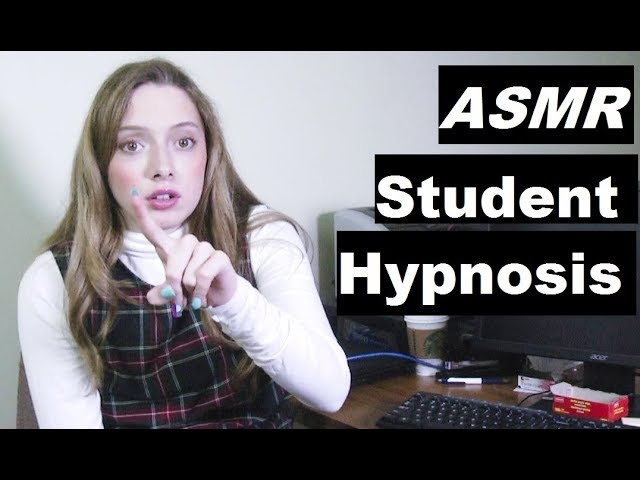 In Victorian times, it was believed that women were easier to hypnotize than men. But modern tests have not confirmed this discovery; it arose out of the nineteenth-century prejudice that women were the weaker sex, and hypnosis required repression of the will.
In Victorian times, it was believed that women were easier to hypnotize than men. But modern tests have not confirmed this discovery; it arose out of the nineteenth-century prejudice that women were the weaker sex, and hypnosis required repression of the will.
Contrary to the facts is the popular notion that you must be stupid to be hypnotized. On the contrary, hypnotizability is directly related to intelligence, or at least the ability to concentrate. The comic effect of Abbott and Costello Meet the Killer, Boris Karlov (1949) is based on this idea. Costello is suspected of killing people at the hotel where he works as a bellhop. The mystic Karlov tries to hypnotize him, but Costello, alas, is too stupid to succumb to hypnosis. In fact, there is a parameter more important than intelligence - a person's self-esteem: people with low self-esteem are more difficult to hypnotize, presumably because they are either more afraid for themselves, or less interested in self-exploration, or do not want to be studied.
In general, no matter how hard psychologists try, it is not yet possible to establish a relationship between susceptibility and personality type. It used to be believed that hypnotizable people differed from the rest by more stable connections with the right hemisphere of the brain. The right hemisphere, in short, controls the left side of the body, its integrity (left-handers represent an exception), as well as orientation in space, while the left controls the right side of the body plus verbal, logical linear thinking. One might therefore expect an artist to rely more on his right brain, and a university professor on his left. Most of us are dominated by the left side of the brain. Some recent experiments with highly hypnotizable subjects have shown that they perform significantly better on right-brain tasks than poorly hypnotic subjects. However, the events that take place in the brain during hypnosis involve much more than simply switching to the non-dominant hemisphere. By itself, the change in the leading role between the hemispheres does not seem to occur always, but mainly in easily hypnotized people. Moreover, the normally dominant hemisphere during hypnosis is also active, and the activity of one hemisphere or another at any particular moment apparently depends on the type of task assigned to the subject. It follows that switching between hemispheres may not be the cause of hypnotizability, it is only part of the general ability of people who are well susceptible to hypnosis to move from one state to another - to withdraw. Work on the study of the links between hypnosis and brain activity has not yet been completed. So, for example, early research seemed to indicate that highly hypnotizable people are those who easily enter the alpha state. Alpha waves (8–13 Hz) are “that noise produced by the brain when the brain is awake but does not work much,” for example, a person is already awake, but keeps his eyes closed. However, current data suggest that hypnotizable subjects, and perhaps hypnosis in general, are characterized by a slower theta rhythm (4-7 Hz), corresponding to a state of drowsiness.
Moreover, the normally dominant hemisphere during hypnosis is also active, and the activity of one hemisphere or another at any particular moment apparently depends on the type of task assigned to the subject. It follows that switching between hemispheres may not be the cause of hypnotizability, it is only part of the general ability of people who are well susceptible to hypnosis to move from one state to another - to withdraw. Work on the study of the links between hypnosis and brain activity has not yet been completed. So, for example, early research seemed to indicate that highly hypnotizable people are those who easily enter the alpha state. Alpha waves (8–13 Hz) are “that noise produced by the brain when the brain is awake but does not work much,” for example, a person is already awake, but keeps his eyes closed. However, current data suggest that hypnotizable subjects, and perhaps hypnosis in general, are characterized by a slower theta rhythm (4-7 Hz), corresponding to a state of drowsiness.
Experimental data indicate that the sensitivity to hypnosis of each individual can be improved, as if it were some kind of skill available for learning. Although the experience of practicing hypnologists shows that the increase in the level of perception is rather associated with overcoming the initial resistance. It's not that patients learn something, it's just that they become less fearful and begin to trust the doctor more. There is another point of view - a rather strong and interesting theory - according to which it is easier to hypnotize a person when the natural rhythms of his body proceed in a relaxed state. Is it possible to resist hypnosis, as, for example, did Kim in the novel by Rudyard Kipling (1901), repeating the multiplication table to himself in order to prevent the hallucinations he was ordered to see? Yes, you certainly may. You must be willing to succumb to hypnosis, otherwise it is useless. There are ways to deal with your reluctance, and as I said, Milton Erickson was a master at that. But even for him, in order to successfully overcome the resistance of the patient, it is necessary that he subconsciously wants to be hypnotized, despite the protests of his mind.
But even for him, in order to successfully overcome the resistance of the patient, it is necessary that he subconsciously wants to be hypnotized, despite the protests of his mind.
Ilya Melnikov Is it easy to hypnotize you?
Ilya Melnikov Are you easily hypnotized? All rights reserved. No part of the electronic version of this book may be reproduced in any form or by any means, including posting on the Internet and corporate networks, for
Where to start?
Who to start with? No matter how paradoxical it may sound, but quite often friendship between families arises thanks to children. Children can study in the same class, engage in the same circle, group or sports section, etc. First they get to know each other, and then their mothers “pull up”
Who wins?
Who will win? The function of regulating someone else's behavior does not even require a computer for its simulation. In fact, any person sitting in front of the dashboard - whether in the cab of a truck, in the command compartment of an airliner, or in the power distribution room
In fact, any person sitting in front of the dashboard - whether in the cab of a truck, in the command compartment of an airliner, or in the power distribution room
Tip Seven Find out at a glance who you can rely on. Signs of a person's reliability
Tip Seven Find out at a glance who you can rely on. Signs of a person's reliability It often happens that we see a person for the first time, and at the same time we need to find out how much he can be trusted and whether it is worth dealing with him. Learn at a glance
4. Who can and should be "analyzed"?
4. Who can and should be "analyzed"? Initially, psychoanalysis was developed mainly for the treatment of neuroses. Over time, it turned out that not only obvious neurotics, but also many other people could benefit from it. Psychoanalysis turns out to be particularly0011
Who is this book for
Who is this book for? This book is intended for psychologists, priests, doctors and nurses, lawyers, personnel managers, salespeople, actors. .. A psychologist must know how people experience their emotions. He must have an idea of what he can say about feelings
.. A psychologist must know how people experience their emotions. He must have an idea of what he can say about feelings
Who raised whom and how
Who raised whom and how The same Eric Bern, in addition to game scenarios, singled out the types of players. How often do they meet in life? Every day. The most characteristic roles of childhood are carried over into adulthood, so the following two types of players appear who set the tone for
Who is this book for?
Who is this book for? “I would like to be different”; “I don’t like the way I live at all”; “I’m an unlucky person”; “Everything is wrong with me” ... I heard these and similar phrases many times from my acquaintances, friends, guys, who worked and just talked. Yes, and she said a lot of them herself
Words can kill, words can save.
 ..
.. Words can kill, words can save... When your speech is pure, the words have an impact not only on you but also on those around you. To speak pure speech is to speak only those words that are true, which raise the spirit and self-consciousness of one's neighbor and his value in
Who can be considered a creative person?
Who can be considered a creative person? In psychology, a creative person is also called self-actualized. Self-actualization is the process of turning a person into what he wants and can become, that is, it is a full and deep disclosure of talents and abilities
Question 7. Can mood swings and pain be reduced for those with severe premenstrual syndrome?
Question 7. Can mood swings and pain be reduced for those who have pronounced premenstrual syndrome? It is possible and necessary.